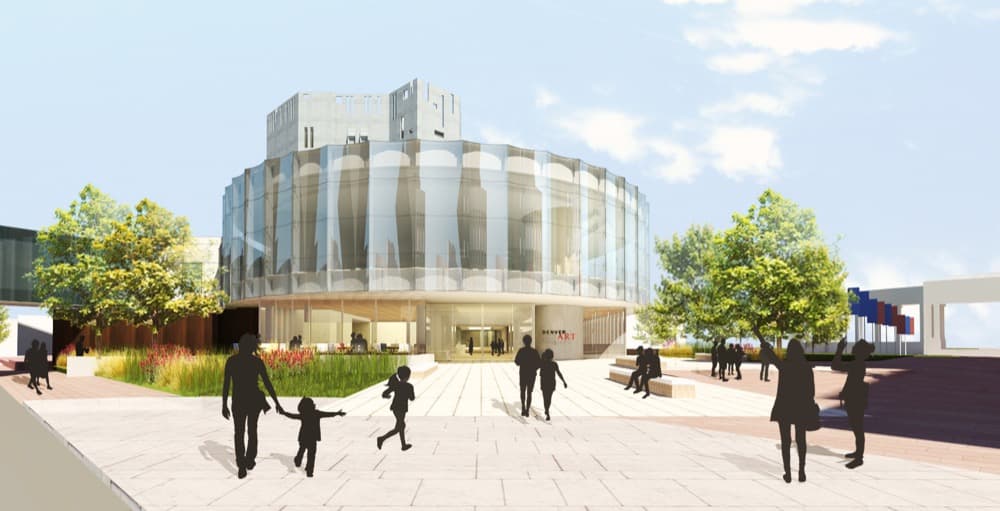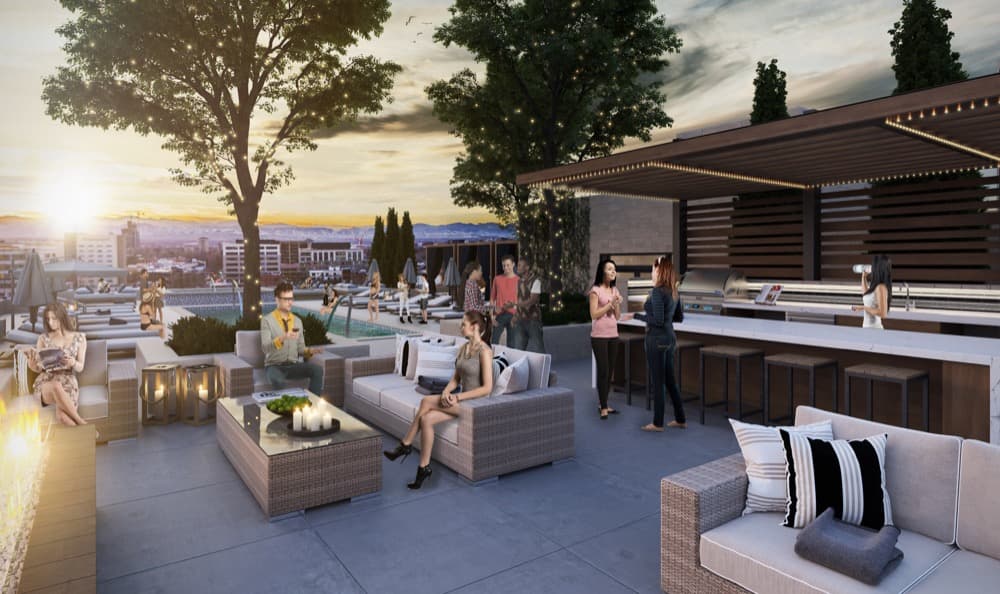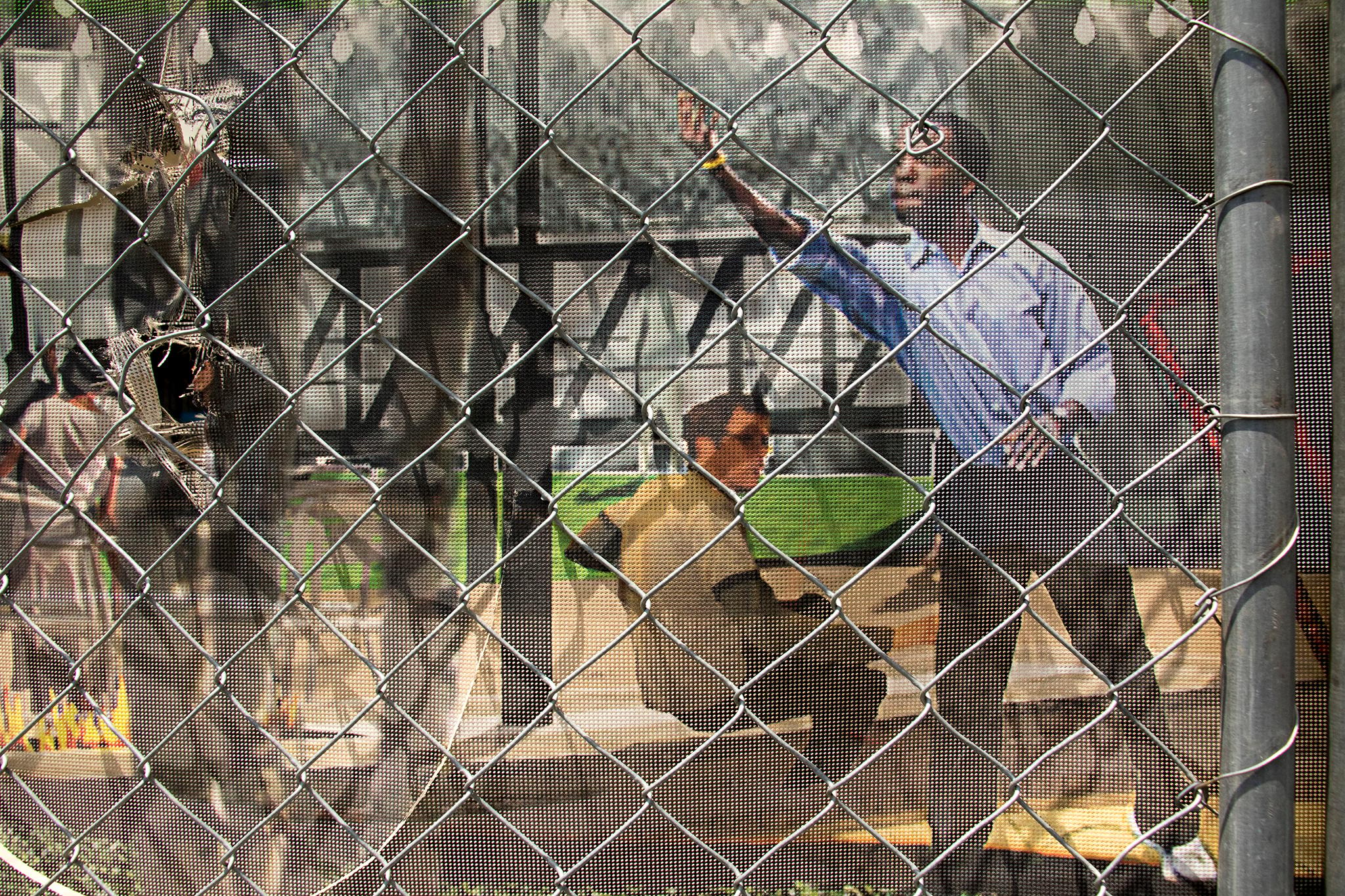You probably see them all the time, though you might tune them out. They're our neighbors — our two-dimensional, fun-loving neighbors of the future who we see enjoying a not-so-distant Denver in the architectural renderings for new developments all over town.
At Denverite, we've taken to calling them "imaginary Denverites," and we've been thinking about compiling some of these pervasive faces for some time. But it wasn't until a conversation on Twitter and a resulting email from the American Institute of Architects' Marisa Pooley that the story came together.
"Lacking in diversity...? Or am I missing it?" asked @License_2_Shill of a rendering. The next thing I knew, Pooley was in my inbox, eager to chat.
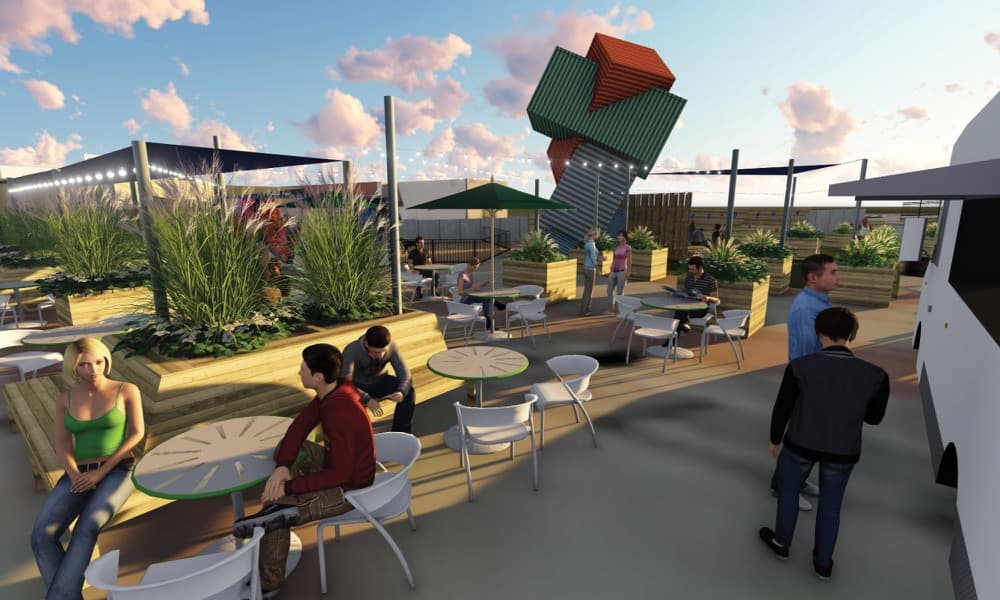
In all industries, particularly in Colorado, people are "thinking about how our professions and employees and staff reflect the people we’re serving," Pooley said over the phone. "In architecture it’s especially important right now."
A recent architecture conference featured panel discussions on the topic for the first time, she said. Attendees even rallied for inclusivity before the event began.
"Part of architecture is designing equitably,” she said. Design "directly impacts the ways people live work and play," and designing inclusively means providing "dignity" for future inhabitants.

And that means diversity in race, gender and experience, she said.
The city has grappled with gentrification and displacement as it's grown. City officials and developers have asked when revitalization crosses the line and new candidates have filed to run for city council in the wake of change. Generally, those who think a lot about this say the problem with new development has more to do with forgetting who used to live in a neighborhood. For some, it's an issue of representation. For us, it's a question of who Denver is being built for.
In some ways, architectural renderings get right to the heart of that.
Take, for instance, this projection of life at The Hub Denver, which is under construction in RiNo. To me, this says: we're new and hip and perfect for sitting fireside with your chest hair coming out of your shirt. Or, to the right, perhaps passing out in a chair.

And ok, these aren't renderings, but I think they still accomplish the same purpose. To my eye, high-end apartments like Union Denver and the Alexan Uptown are really big on blondes with dogs.
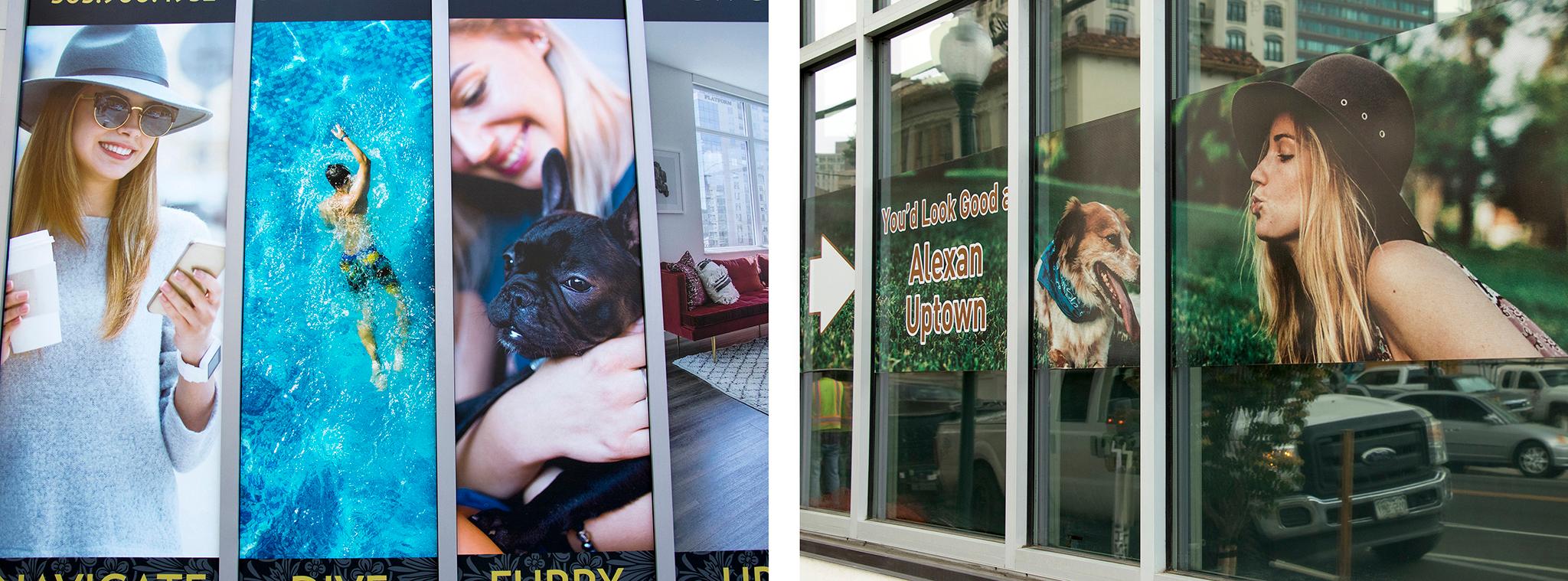
Renderings "can be done to communicate a design intent, sell a design vision," said John McIntyre, a principal with Tryba Architects. "But in marketing renderings, typically, you are trying to project, tell a story about the development. That often means telling a story about the kind of things that you’d imagine happening there."
If a projection of the future doesn't include everyone, what does that say to the people left out?
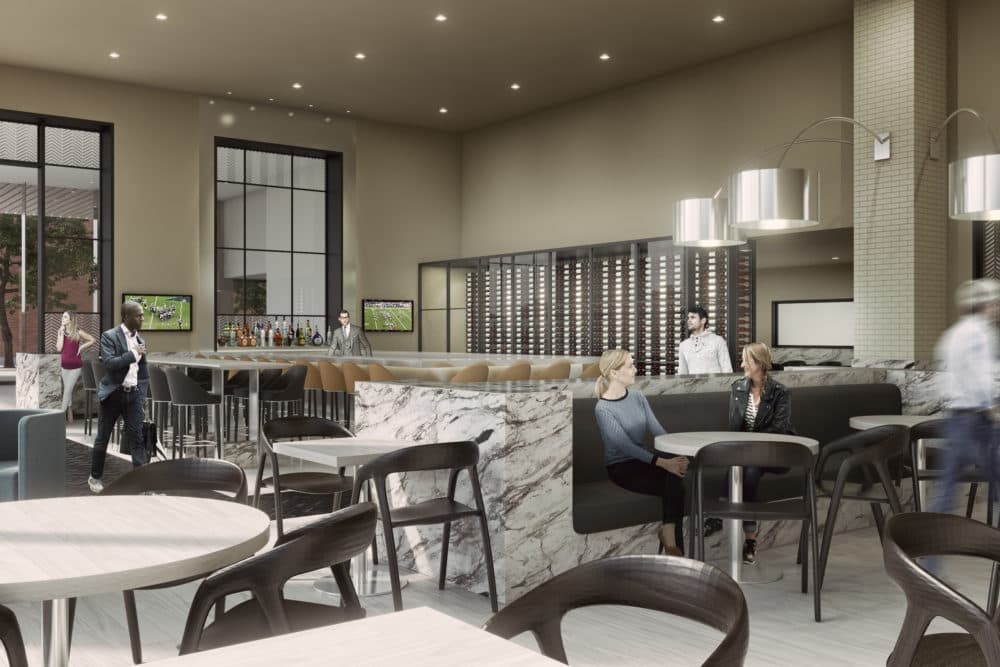
"It says if you don’t fit that image, then you may not be accepted there," said Phillip Gallegos, an associate professor of architecture at the University of Colorado Denver. "Although, I find Denver to be better in some ways than other places in the country."
We get images like this in our inboxes all the time. I looked through 100 of them to see, generally, what kind of diversity is projected in them.
Of those 100, all of which prominently contained people, 34 contained people who weren't obviously white. Fifteen others contained abstracted shadow versions of humans: flat, single-color figures that anyone might be able to see themselves in.
I asked McIntyre, who's company works with designers to produce renderings, why equity might not always be present.
"Good developers who are place-based are wanting the communities that they are building in to be reflected in the images they’re producing," he said over the phone. "But there’s also a limited supply of those [2-D] people that you can use. They tend to be quite generic."
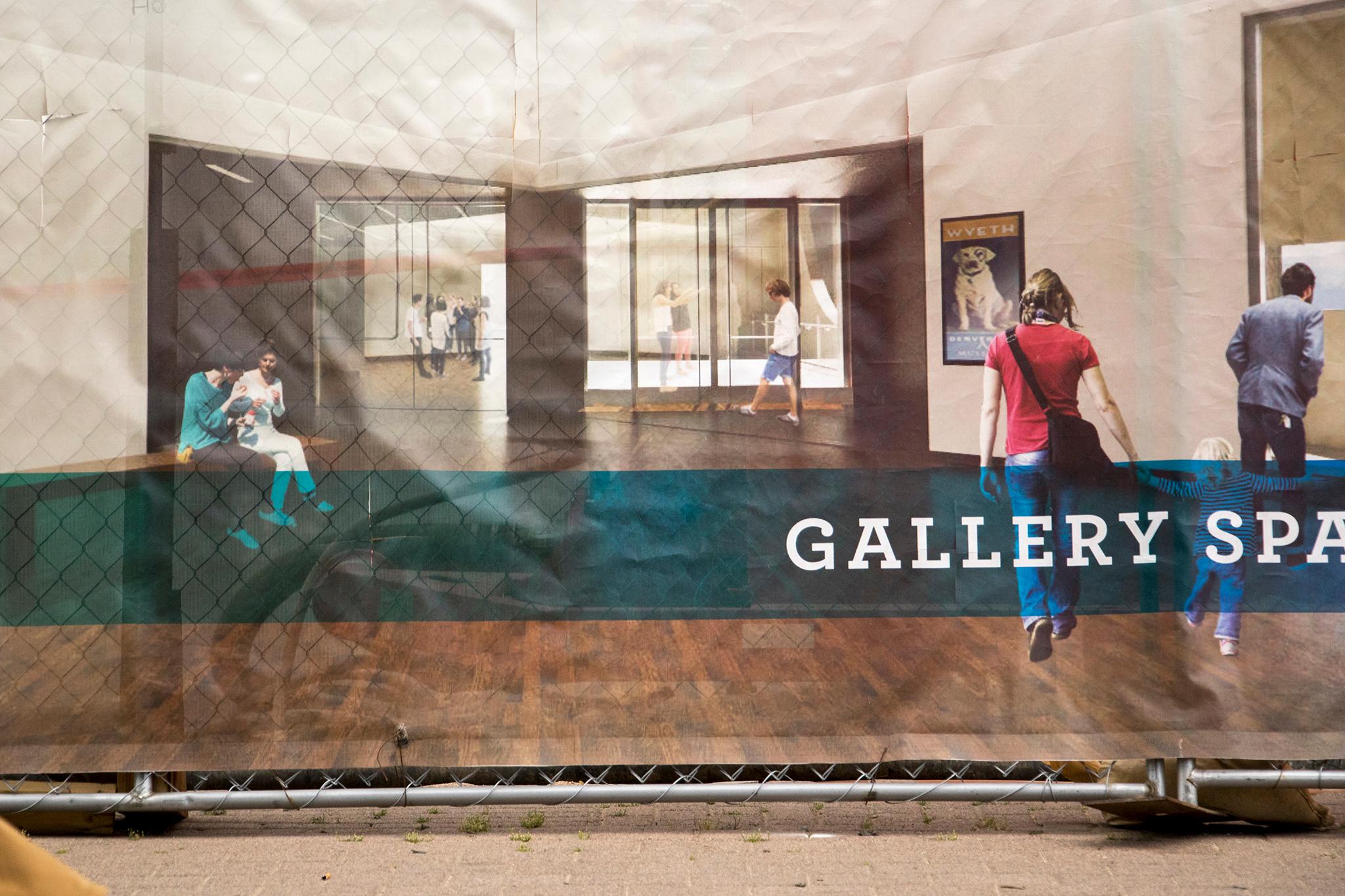
Generally, he said, designers use clipart libraries online that may lack diversity. And beyond that, a designer based in another country might be making art for a market across an ocean.
For Gallegos, this is a really personal issue. When he first earned his license in the '70s, he said, he was the only Chicano architect in the entire state. There were some Latino people from other countries working here, but he was one of the only Americans of color.
That lack of diversity at the top has trickled down into designs and end products.
"When you talk about renderings, usually most of the programs, because they’re all developed by white people, when you get the images and drop somebody in there, there are very few people in the renderings that [are] people of color."
Still, Gallegos said things have slowly improved.
"It’s better than when I started and I was the only one, and we were less than 1 percent of the architects," he said. "It’s taken such a long time. It’s taken my whole professional life to see even small amounts of change like that in this profession."
McIntyre, who works on projects all over the world, also said that representation in these libraries is improving.
"Within North America, I think you are starting to see more diversity in clip art available," he said, "but you have to work harder to make sure that’s coming though in the images."

Tryba, he said, sometimes works with artists who spend time taking photos of people on the street in the city where a project is being pitched, an effort to nail the "sensibility" of a place.
"This conversation is happening internationally," he said. "It’s a fundamental question as we are getting more urban, and it’s just the same question that we’re having from a development sense, which is about the benefits or otherwise of diversity and affordability and respecting existing character and the impact of gentrification."
